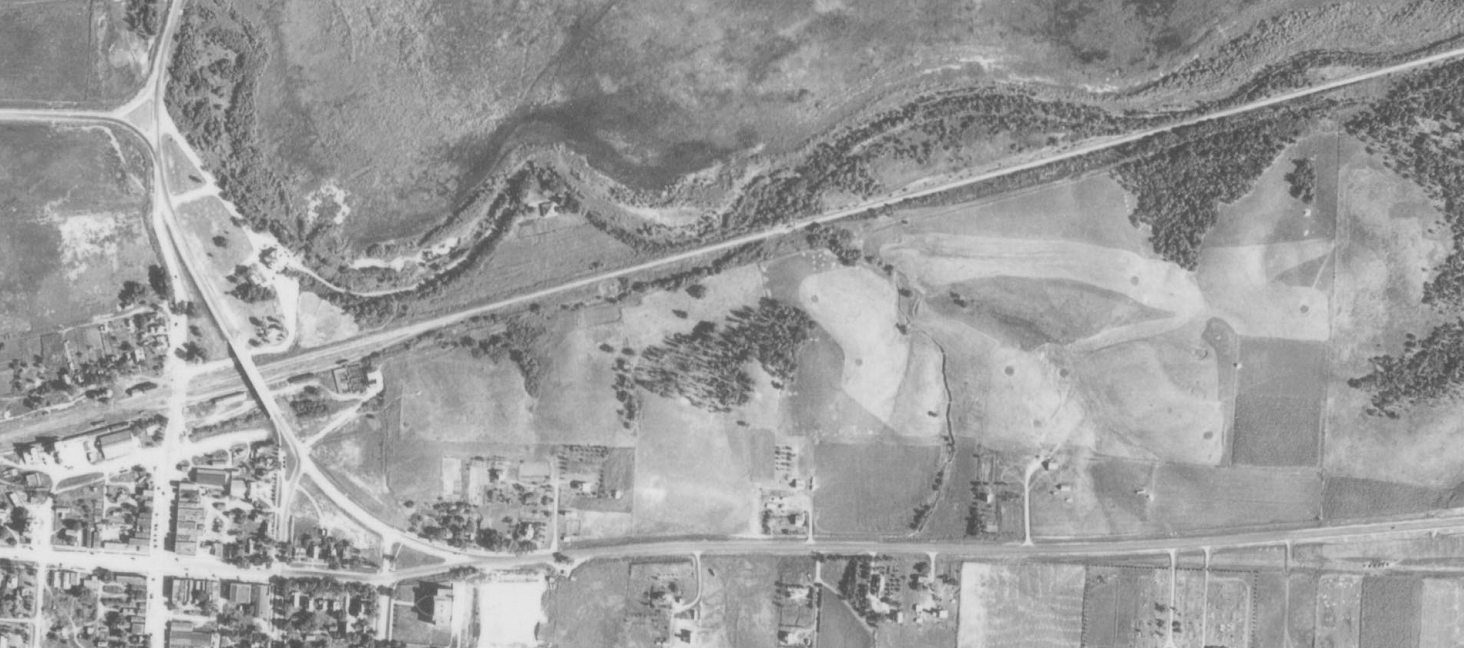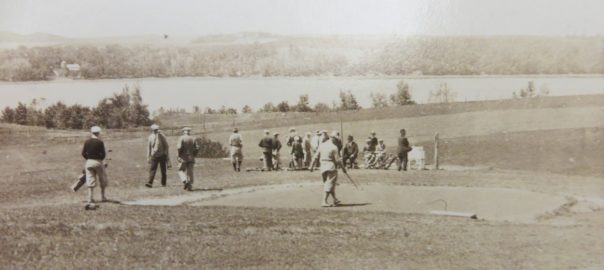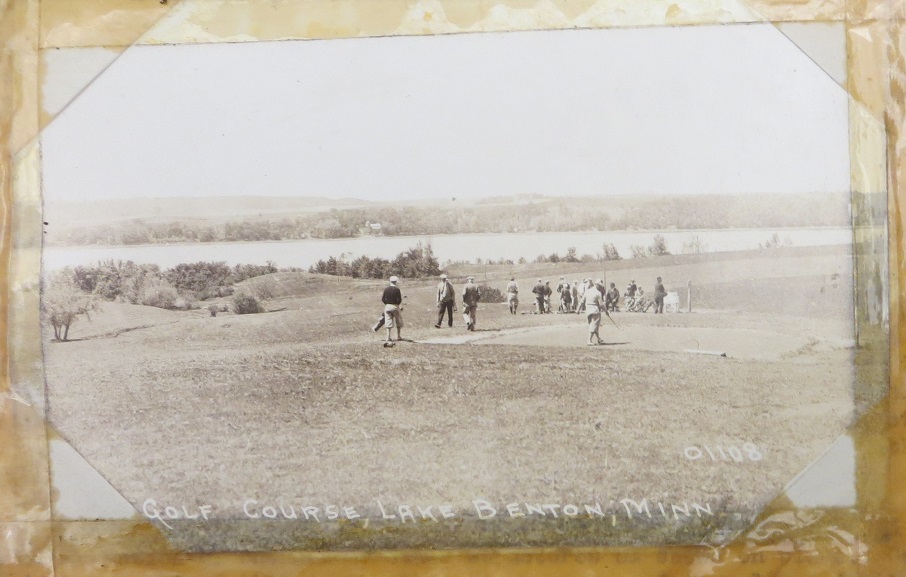In southwestern Minnesota lies some of the most fertile ground in the state.
For lost golf courses.
Chapter 42 of “Fore! Gone.” was titled “Silos and Flagsticks.” It offered a tip of the Northrup King cap not only to the rich loam of the southwestern corner of the state but to eight small towns that were — are, actually — home to at least 10 abandoned golf courses.
Those 10 — in Chandler, Fulda, Heron Lake, Jackson, Lakefield, Tracy, Windom, and three in Pipestone — might not have been the half of it.
In the two-plus years since my book was published, I have written about the modest little course west of Madelia and the stunningly historic first site of golf in Marshall. Now, there is more in southwestern Minnesota — a lot more.
In an area roughly from Ortonville to Granite Falls to Mankato and all points south and west, I have so far identified 15 lost golf courses. I suspect there are twice as many. Their life spans are distinctly similar — almost all were founded in the 1920s, when times were good across small-town Minnesota and the economies hummed along like well-oiled combine harvesters, but were abandoned in the late 1930s or early 1940s, casualties of the Great Depression and/or the advent of World War II, when many of the male residents left town to fight overseas and many of the female residents were preoccupied with raising families or helping domestically with the war effort.
Information on these courses often is spotty, but in the coming weeks (OK, probably months; I don’t work as fast as I used to) I will be writing about dozens more lost golf courses that have revealed themselves. A good share of them make their eternal rest in the land of silos and flagsticks.
For starters, a trip far west, nearly to the South Dakota border …
LAKE BENTON GOLF CLUB
Eight miles east of the Minnesota-South Dakota state line lies downtown Lake Benton. The city was the seat of Lincoln County from 1882-1902, and like a number of other small towns in that neck of the pheasant fields, it featured a population healthy and large enough to take a run at golf in the 1920s. Lake Benton’s population peaked in the first half of the 1900s — it was 944 in 1920, 903 in 1930 and 961 in 1940. Today, it is estimated to be in the mid-600s.
By 1924, according to an estimate from the Lincoln County Historical Society, a golf club had formed and established a nine-hole, sand-greens layout a half-mile east of downtown, in what is now a mostly open area bordered by Minnesota 14 on the south, Lakeview Drive on the west, railroad tracks on the north (the course did not go as far north as the lakeshore) and Benton Street on the east. The historical society said the course was owned by the city of Lake Benton. A 1925 story in the Lake Benton News affirms that the course was established in 1924, as it reports that “last year was the initial year” of the club.
The course, wrote the historical society’s Anne Lichtsinn in an email, had “grass that got so long that balls would get lost and then you had to go home.”
In 1926, the Minneapolis Tribune reported on misfortune at the Lake Benton course in a story headlined “Foursome Halted When Visiting Golfer Breaks Leg Swinging at Ball”:
“Ivanhoe, Minn., Sept. 17 — George Graff, cashier of the First National Bank of this city, will long remember his first trip to the Lake Benton golf course.
“Graff had never played the course and with a few friends decided to make the trip and play a round.
“When the foursome had played a couple of holes, Graff took a vicious drive at the ball — and he broke his leg.”
In 1930, another outsider visited Lake Benton in a trip that had a less calamitous conclusion.
“Mr. Frank Broki of Minneapolis, a professional golfer and instructor, was in Lake Benton on Wednesday of this week and gave lessons to a number of Lake Benton golf fans,” reads a passage from a reprint of a story in the Aug. 1, 1930, Lake Benton News. “Mr. Broki played one round on our course in a foursome comprised of some of our best players and made nine holes in 34, 32 being par. On account of the extreme unevenness of the course and the multiplicity of natural hazards, it is considered a very difficult one and to make it in 34 the first time is considered remarkable.”
Broki Brokl was something of a Johnny Appleseed of small-town Minnesota golf. He won state public links championships in 1927 and 1928 and the State Amateur championship in 1929 before turning professional. A Minneapolis Tribune story from 1932 reported that Broki Brokl “now is what could be called a ‘circuit rider,’ teaching and spreading the gospel of better golf on a circuit that takes him around three states (Minnesota, South Dakota and Iowa). … He makes four trips around the two circuits each season spending several days to a week giving individual instructions to club members.”
(Correction, November 2017: The Minneapolis golfer’s name was spelled Brokl.)
Lichtsinn was unaware of the circumstances of the Lake Benton golf course’s demise, noting only that “it may have died out in the depression and drought at that time.” My best guess is that that is partly true. In fact, the course survived at least through the late 1930s.
The Lake Benton News of Aug. 23, 1932, reported on election of officers at the golf club, with H.H. Evans elected as president. The club appeared to be something of a regional hub for golf: Enrollment consisted of 27 members from Tyler, 17 from Ivanhoe, 13 from Lake Benton, three each from Arco and Hendricks, and two from Ruthton.

In June 1938, a tournament was held at the course, the newspaper reported. “The course this year is in the finest shape it has ever been,” the story noted. “Entry fees are $1, and ham, bacon and golf balls will be awarded as prizes.”
The next week’s follow-up to that story referred to the “Lake Benton-Tyler golf course” and noted “raspberries to losers” in tournament play. It is presumed those were literal fruity raspberries, not the kind emitted by placing one’s tongue between the lips and emitting a sputtering sound.
Another tournament was held later in June 1938, with the newspaper referencing another name for Lake Benton’s course. “Paired with Martin ‘Dietz’ Griedzicki, of the Ivanhoe course, Jens Bolleson of the Ben-Ti golf club, blazed away on the local links.” Bolleson shot 38-36–74 and won a ham, with 20 players entered in the event.
A Lake Benton news clip from June 16, 1939, referred to the course as “Ben-Tye golf links.”
And then … nothing.
I found no further references to golf in Lake Benton in scanning microfilm of the Lake Benton News from 1939 and 1940 and then as late as 1946 (a few Minnesota courses shut down during World War II, then resumed operations later). Perhaps telling, and this is pure speculation, is a reference in the July 7, 1939, Lake Benton News to a “grasshopper scourge” in nearby Ivanhoe. Perhaps there were residual effects in Lake Benton that imperiled the course. Perhaps the golf club had just, seriously no pun intended, run its course.
In July 1940, a new bowling alley, named Paul’s, opened in Lake Benton. The Lake Benton News covered local baseball at length and included stories on other sports, including auto racing. But the only reference to golf that I found in looking through much of the year’s newspaper archives was to more misfortune, albeit less severe, at a golf course to the north.
W.A. Little, the newspaper reported, fell into a pond at a golf course in Alexandria, pulling his caddie along with him into the drink when the two could not successfully negotiate the bank of the pond.
Author’s notes: The Lake Benton golf course marks the 150th that I have identified in Minnesota. When I started this lost-course project in 2012, I soon suspected I might find as many as 70 lost courses in the state. Then I realized there might be a hundred. As more abandoned courses revealed themselves and as more modern courses folded, I realized there might be 150. Now that I have reached that mark and know of at least 20 more, I have no doubt there are more than 200 lost courses scattered throughout the state. I’ll never find them all. But if you’re out there, deceased host of the game, I’m trying to find you.
My apologies for not including a credit on the photo of the golf course at the start of this post. I received the image from a friend who doesn’t remember where the image came from. I would be glad to offer proper credit if the source is revealed.

